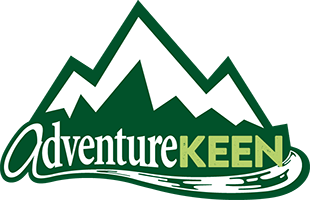Bird Nest Finder Exclusive: Interview With Expert Dorcas S. Miller

Dorcas S. Miller, founding president of the Maine Master Naturalist Program, is the author and illustrator of Bird Nest Finder, in addition to more than a dozen other nature guides in the Finders series, including Track Finder, Scat Finder, Winter Weed Finder, Berry Finder, and Constellation Finder. Her Finders books have sold over half a million copies. Bird Nest Finder is her newest one, released in October 2024.
What inspired you to write Bird Nest Finder?
When the U.S. Fish & Wildlife Service (USFWS) issued a permit to a naturalist training program that I helped start, we could legally collect and use a variety of specimens—-including nests—in our programs. I bought a popular nest book replete with color photographs but without a key. I also found an out-of-print 1949 publication with an extensive key but no photos or illustrations. Both books were challenging to use. My goal was to develop a user-friendly guide with keys and illustrations.
What prompted you to focus on aboveground bird’s nests in eastern North America?
Two reasons: Ground-level nests are so well camouflaged that they are much harder to find. Plus, Finder books are only 64 pages long, so there simply wasn’t room for both ground-level and aboveground nests. I couldn’t even include all aboveground nests, so I chose to focus on common (and sometimes charismatic) species.
What do you think is the most surprising fact about bird’s nests that readers might not be aware of?
A Migratory Bird Special Purpose Salvage permit (issued by the USFWS) is required in order to collect dead migratory birds, bird parts (such as feathers), abandoned nests, and nonviable eggs from the wild for conservation education purposes.
Can you share some challenges you faced while researching and writing this book?
* How to develop a key that would encompass nests that are large and small, beautiful and plain, elaborately constructed and apparently haphazard, camouflaged and in plain sight;
* How to convey with pen and ink both the details (grass, twigs, fluff, lichen, plastic, wasp’s-nest paper, etc.) and the gestalt of each nest;
* How to include enough—but not too much—written information;
* How to fit everything in a pocket-size format;
* How to blend data and observations collected from naturalists over the course of 100 years with my own observations;
* How to deal with nests that I’ve never seen.
The last challenge sent me on an expedition to Cambridge, Massachusetts, to visit the extensive nest collection at the Museum of Comparative Zoology at Harvard University. There, I was able to observe, measure, take notes on, and sketch nests from all over eastern North America.
How do you envision your book being used by readers in the field?
I hope that the book helps people learn about where and how birds build their nests, then gain a greater understanding of the inter-connections of the natural world.
Could you discuss any memorable encounters or discoveries during your field research for this book?
The nests that tell a story are particularly memorable. In the woods behind my house, I found two unbroken, 1.1×0.8-inch white eggs resting on the flattish surface of a 3-foot stub covered with pine needles. No birds fluttered near the scene. Two days later, both eggs had disappeared. What happened here? White eggs of this size and in this setting pointed to the mourning dove, which builds a minimal nest, usually with a few haphazard twigs and grasses. A predator—likely one of the ubiquitous squirrels but perhaps a raccoon, skunk, or fisher—had dropped by for an egg-y hors d’oeuvre.
The winter wren regularly uses niches in the upturned roots and dirt of a blown-down tree. Time and time again I checked blown-downs without success. Then, as I walked along a trail with friends, I glanced at a fallen tree and two fist-size cavities in the roots caught my eye. One had a floor of grasses and moss; the edges of the hole were crisp. The other floor contained vegetation, but the entrance was worn and some bits of moss had dribbled down the roots. What happened here? A male wren had started both nests; the female chose one and added the lining. As she flew in and out with food, her wings brushed against and rounded the niche edges, transporting some materials past the lip.
Do you have any advice for aspiring naturalists or those interested in contributing to bird conservation?
* Volunteer. Some time ago, I banded land birds for two months (fall migration) at a bird observatory. I helped support long-term research and I learned so much. You might not have that much time, but if you can identify accurately, you might spend a day collecting information for the annual Christmas Bird Count, a blitz to tabulate every bird and species within a specified time in a defined area. Your local bird club can provide details. In the process, you’ll spend time with other passionate birders.
* If you have a backyard, check for invasive plants and take steps to limit or eradicate them. These species can choke out native species that serve as host nests. If you don’t have a yard, help an organization that does. This past summer, I volunteered with individuals from a local land trust who wielded machetes and scythes, cutting back highly invasive Japanese knotweed. The team had cut twice already (to sap plant strength); professional application of an herbicide would follow, as would replanting with native vegetation. There was a stark difference between before and after; I felt my contribution was making a difference.
* Check out conservation organizations and join one or two. These organizations are likely to have a list of projects for volunteers, so you can contribute time and learn a lot.

The Nature Study Guide Finders Series was started by May T. Watts in the 1930s. The series has been updated, with one group released in October 2024 and the rest of the series to be released in April 2025. Go to naturestudy.com to learn more.





